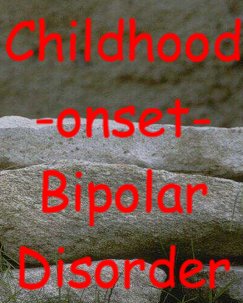Childhood Onset Bipolar Disorder ( COBPD) is what they call the form of Bipolar in children. Children who are afflicted tend to rapid cycle much worst than adults. They call this ultra - ultra rapid cycling or ultradian. These children can be happy one minute and then sad or angry the next, sometimes with no apparent trigger, sometimes with small things that most kids can handle, like a lower grade than expected, not getting what they want for dinner, losing a game, or having to do chores.

